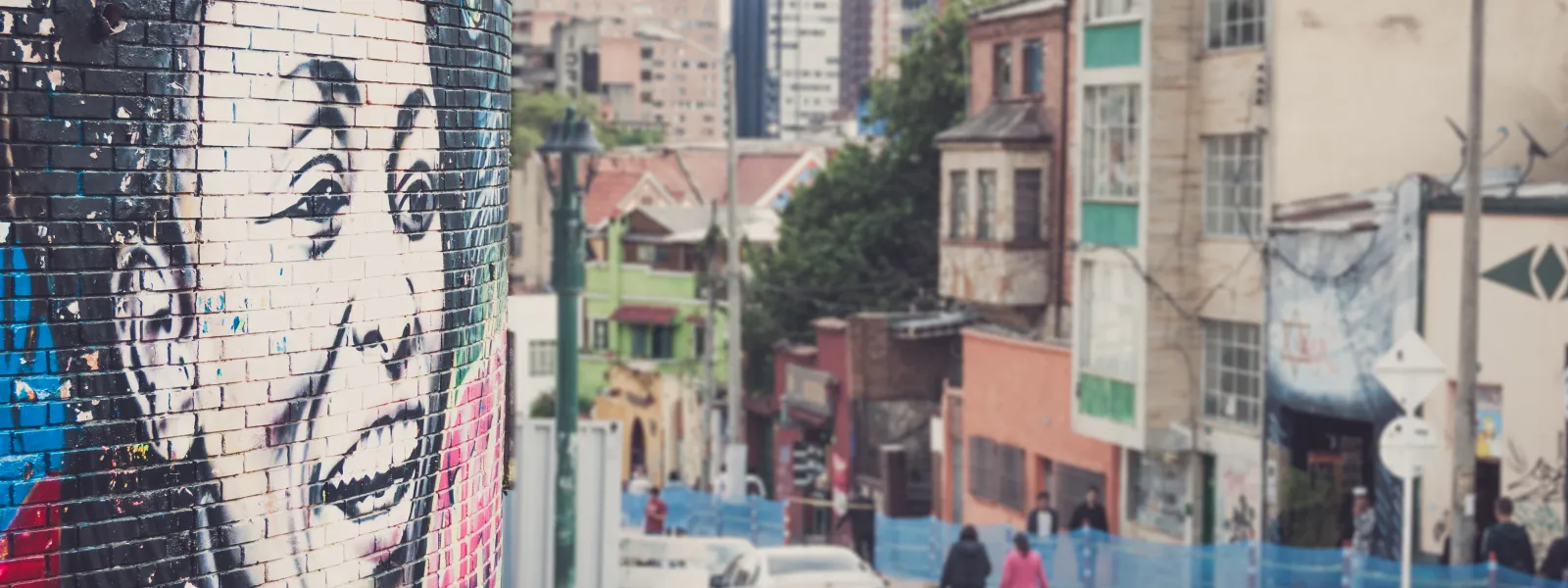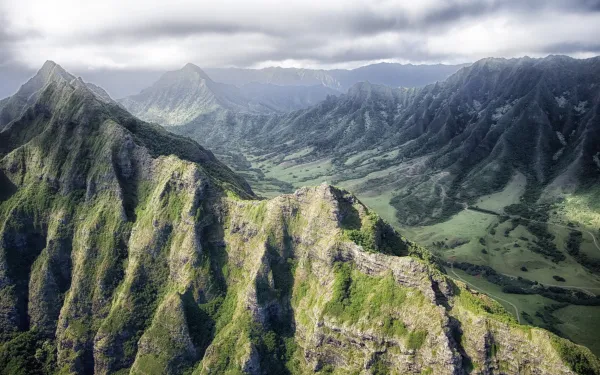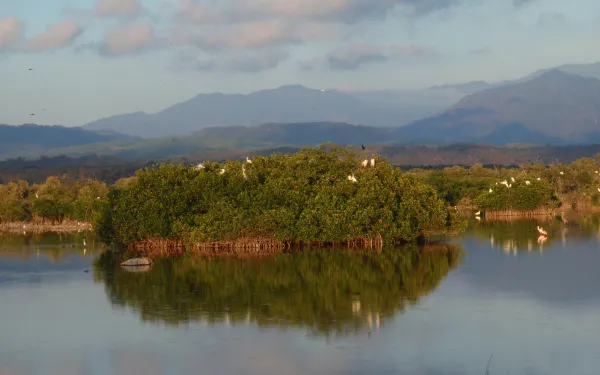
Project
Fortaleciendo la Protección Mediante el Sistema de Derechos Humanos de la ONU
Lo vemos una y otra vez. Industrias arrojan contaminantes tóxicos al aire. Operaciones de fracking contaminan el agua con químicos venenosos. Grandes represas inundan poblaciones y desplazan personas. Minas dañan tierras de cultivo. Personas pierden su salud, su trabajo, su acceso al agua, e incluso su hogar. Todos estos hechos violan derechos humanos básicos protegidos por normas internacionales.
Hacer cumplir la legislación sobre derechos humanos brinda otra estrategia efectiva para poner en la mira problemas causados por degradación ambiental. El Sistema de Derechos Humanos de las Naciones Unidas ofrece varios mecanismos que AIDA usa para proteger derechos humanos —incluido el derecho a un ambiente sano— en América Latina.
Proyectos relacionados

Pesca responsable: Garantía de alimento para esta y futuras generaciones
Por Gladys Martínez, asesora legal de AIDA ¡Qué delicia comer un cebichito peruano! ¡O pescado frito acompañado de patacones! Me declaro culpable: ¡Me encantan los mariscos! Por eso mismo, uno de los proyectos con el que más me identifico del Programa de Protección Marina de AIDA es la publicación Herramientas para la pesca sostenible y el manejo costero. Y es que, al igual que yo, más de 4.2 billones de personas consumen 15% de proteína en forma de mariscos. De ahí la importancia de implementar medidas para la pesca sostenible y la conservación de la biodiversidad marina. Luego de una investigación de más de diez años, AIDA ha desarrollado una compilación de once capítulos en la que se analiza la situación actual de los mares y las causas de la crisis de las pesquerías (las explotaciones pesqueras o pesquerías son los esfuerzos organizados para capturar peces u otras especies acuáticas mediante la pesca). La publicación presenta elementos que ayudarían a limitar tal efecto, así como casos de estudio de derecho comparado y un análisis de las obligaciones internacionales que tienen los Estados para proteger y conservar los mares y su biodiversidad. Los marcos regulatorios en ese ámbito también son objeto de estudio. En algunos capítulos se abordan los distintos instrumentos regulatorios usados para controlar el esfuerzo pesquero en diferentes países del mundo. Entre ellos están los programas para reducir licencias vigentes de barcos, aquellos para decomisar barcos, los de reentrenamiento de pescadores, y los de reducción del tiempo de lance (tiempo en el que permanece un arte pesca en el mar). Se menciona específicamente el fenómeno de la “captura incidental” (cuando la captura no discrimina entre las especies objetivo de las que no lo son), y se formulan algunas recomendaciones para reducir esa práctica dañina. Por otro lado, un capítulo de la publicación examina la figura de Áreas Marinas Protegidas (AMP) y explica sus beneficios como herramienta de conservación. Hace referencia a las categorías de AMP conforme a los ecosistemas protegidos y a las clasificaciones de organismos internacionales como UNESCO y la Unión Mundial para la Conservación de la Naturaleza. Describe casos de AMP en México, Costa Rica y Brasil. El capítulo contiene medidas de protección de los recursos en alta mar mediante AMP transnacionales y finaliza abordando la diferencia entre áreas protegidas cerradas a la pesca y reservas pesqueras. Dada la magnitud de los impactos de la pesca responsable, la compilación incluye en los últimos capítulos los principales instrumentos económicos que —aplicados y diseñados de manera eficiente— pueden promover la protección, restauración, preservación y aprovechamiento sostenible de los recursos marinos. Estos instrumentos se dividen en tres categorías: de mercado (certificación de pesca y eco-etiquetado), fiscales (impuestos verdes, derechos y subsidios) y financieros (creación de fondos y préstamos). Los aspectos socio-ambientales del sector pesquero —crucial para una parte importante de la población mundial en términos de generación de empleo, seguridad alimentaria y potencial de superación de pobreza— también encuentran cabida en la publicación de AIDA. En ella se analiza la situación actual del sector, advirtiendo la pobreza que le rodea y las duras condiciones laborales de las personas que trabajan en el mismo. Yo quiero seguir comiendo mariscos y que mi descendencia también pueda tener ese placer libre de remordimientos ¿Usted? En virtud de las luces que la compilación de AIDA arroja sobre el tema, me atrevo a decir que esa meta es posible. Si le gusta nuestro trabajo, ¡apóyenos por favor! Finalmente, Herramientas para la pesca sostenible presenta un análisis sobre la acuicultura en el continente americano: sus impactos, los riesgos que implica para la salud de las personas y los métodos alternativos. Ello se realiza incorporando ejemplos de distintos países de la región y el mundo para ilustrar lo que funciona y lo que no ha sido exitoso. Lo anterior da pie a mencionar también los requisitos mínimos para desarrollar la acuicultura reduciendo sus impactos. Entre ellos están la adecuada zonificación de los proyectos y especies a cultivar, las técnicas apropiadas de alimentación y eliminación de desechos, y el monitoreo y vigilancia de los proyectos por parte de los Estados, entre otros. Adicionalmente, explicamos técnicas novedosas como el policultivo, el cultivo en tierra firma y la certificación ecológica. Todas ellas están siendo investigadas como una alternativa con menos impactos ambientales y humanos.
Leer más
Tabla de casos sobre derechos humanos y ambiente ante el Sistema Interamericano de Derechos Humanos
A fin de ayudar a organizaciones e individuos a obtener información sobre la protección del ambiente en el Sistema Interamericano de Protección de los Derechos Humanos, AIDA ha creado un cuadro de casos sobre la temática ante el Sistema. El cuadro presenta la información de manera esquemática y organiza los casos según su estado procesal ante la Comisión Interamericana de Derechos Humanos (CIDH) y/o ante la Corte Interamericana de Derechos Humanos; identificando las fechas de las decisiones de Admisibilidad, Fondo, Solución Amistosa y/o Sentencia emitida por la Corte Interamericana, otorgamiento de medidas cautelares y/o provisionales, según corresponda. Finalmente, el cuadro presenta un resumen de la decisión más reciente en el cual destaca el estándar fijado por la Comisión o la Corte según el caso. Esperamos que el cuadro sea de utilidad para los usuarios del Sistema y todas aquellas personas y organizaciones que busquen conocer más acerca de la protección internacional del ambiente.
Leer más
México actúa para proteger sus humedales del desarrollo no sostenible
AIDA y los miembros del Comité Nacional de Humedales han obtenido una gran victoria tras años de trabajo para proteger legalmente a los humedales —zonas terrestres inundables de manera permanente o intermitente como esteros (desembocaduras de ríos en el mar), arrecifes, manglares, entre otras— de México. El 4 de febrero de 2014, la Comisión Nacional de Áreas Naturales Protegidas (CONANP) presentó la nueva Política Nacional de Humedales, un marco legal que nosotros habíamos estado pidiendo desde 2009. “No es la panacea, pero es un buen comienzo”, dice Sandra Moguel, abogada de AIDA que participó en el Comité Nacional de Humedales, un grupo liderado por la CONANP que ayudó a desarrollar la política. México es rico en humedales. El país ocupa el segundo lugar, después del Reino Unido, en el número de zonas de humedales protegidas bajo la Convención Ramsar, un tratado internacional para la conservación y el uso sostenible de esos ecosistemas. Los arrecifes de coral, con siglos de antigüedad, sirven como áreas de reproducción para peces que alimentan a la población y deleitan a los buzos. Los bosques de manglar albergan especies en peligro de extinción y brindan servicios ambientales cada vez más importantes: absorben las emisiones de carbono, y protegen a las costas de tormentas, mismas que son más severas debido al cambio climático. Pero muchos arrecifes, manglares, esteros y ríos han sido víctimas de desarrollos pobremente planeados. En el Golfo de California, por ejemplo, planes de mega resorts nos han mantenido ocupados defendiendo el arrecife de coral Cabo Pulmo y, ahora, una propuesta de expansión portuaria está amenazando los arrecifes de Veracruz. Para defender estos y otros humedales, hemos tenido que recurrir a una maraña de leyes y políticas. Pero ya no más. Ahora contamos con un instrumento específico y además acorde a las leyes y políticas referidas a la protección de humedales. La nueva política establece acciones, metas y prioridades para el manejo y protección de los humedales. Es un gran avance. Si bien una política nacional de humedales es un requisito para Ramsar, la de México se distingue de muchas otras en el mundo por establecer no sólo principios y lineamientos, sino también un plan de acción para llevarlos a cabo. Por ejemplo, el gobierno pronto establecerá y mantendrá niveles mínimos de agua para preservar los manglares. Otras acciones garantizarán el uso razonable de los humedales. La pesca, el turismo y otras actividades que dependen de los manglares deben realizarse de manera sostenible. Si se producen daños, el Estado debe garantizar la restauración de estos ecosistemas. Un elemento clave que AIDA impulsó es el principio de progresividad ambiental. La nueva política impide al gobierno continuar modificando y reduciendo áreas naturales protegidas para dar paso a grandes proyectos de infraestructura, o beneficiar intereses privados. Ahora las autoridades deben preservar y promover la progresividad ambiental respetando los estatus de áreas protegidas y mejorando las salvaguardas. Estamos emocionados. Este principio podría ayudar a AIDA en su batalla legal para detener la construcción del proyecto hidroeléctrico Las Cruces en el río San Pedro Mezquital. La hidroeléctrica reduciría el flujo de agua y los sedimentos que alimentan y sostienen a los manglares de Marismas Nacionales, una zona protegida de humedales en el Golfo de California. La construcción de la hidroeléctrica revertiría claramente el progreso ambiental. La nueva política tiene puntos débiles. Por ejemplo, no establece fechas para revisar el progreso del plan de acción, y las acciones podrían complementarse para que sean más efectivas, pero, comparativamente, está a la vanguardia de las políticas de humedales en América Latina. “México está poniendo el ejemplo”, dice Moguel. “Esperemos que esto aliente a otros países a hacer lo mismo”. Tus contribuciones nos han ayudado a presionar para el desarrollo de esta nueva política, y a realizar aportes a la misma. Y con tu apoyo constante seremos capaces de ayudar a México en sus esfuerzos por proteger sus vitales humedales.
Leer más